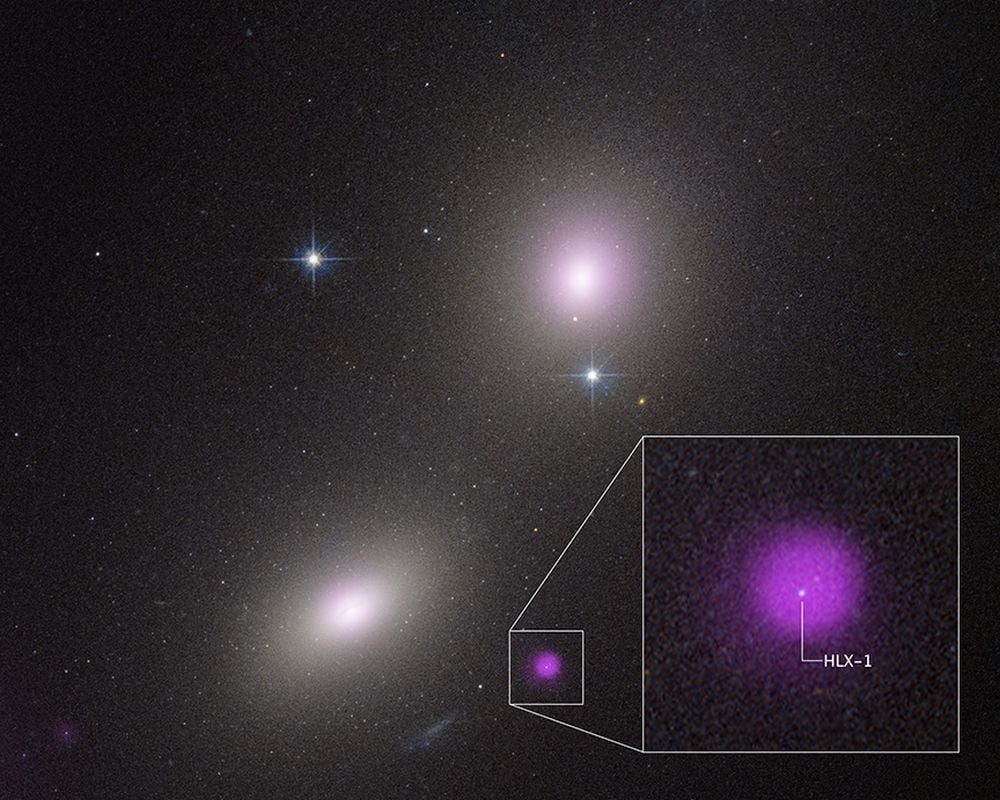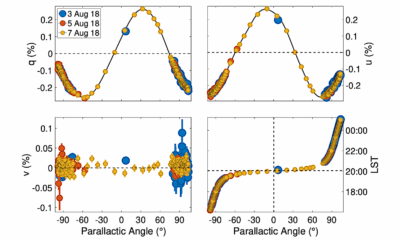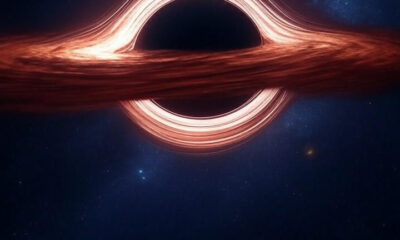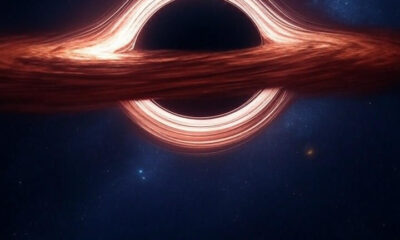Science
Astronomers Unveil Potential Intermediate Mass Black Hole in NGC 6099

The discovery of a potential intermediate mass black hole (IMBH) in the elliptical galaxy NGC 6099 marks a significant advancement in our understanding of black hole evolution. Researchers, led by Yi-Chi Chang from the National Tsing Hua University in Taiwan, have identified evidence of an IMBH consuming a star, a finding detailed in their recent paper published in The Astrophysical Journal.
This candidate IMBH is located approximately 450 million light-years away and is designated as NGC 6099 HLX-1. The researchers utilized data from the Hubble Space Telescope and the Chandra X-ray Observatory, which detected bright X-ray emissions indicative of the black hole’s activity. These emissions occur when material from a companion star is drawn toward the black hole, creating a superheated accretion disk that emits X-rays.
According to the researchers, “We report on the intriguing properties of a variable X-ray source projected at the outskirts of the elliptical galaxy NGC 6099.” This phenomenon suggests the presence of an IMBH, as the emissions align with characteristics observed in other X-ray sources associated with tidal disruption events (TDEs).
The source, first detected by Chandra in 2009, was noted for its bright X-ray flares. Continuous monitoring by the European Space Agency’s XMM-Newton has revealed fluctuations in its brightness. The team has built a compelling case for the existence of an IMBH based on the extreme luminosity of the X-ray source, which is atypical for stellar-mass black holes but fits the theoretical range for IMBHs.
Researchers emphasize the significance of identifying IMBHs, as they may provide critical insights into the hierarchy of black holes, bridging the gap between stellar mass black holes and supermassive black holes (SMBHs). “X-ray sources with such extreme luminosity are rare outside galaxy nuclei and can serve as a key probe for identifying elusive IMBHs,” stated Chang.
The study also highlights the presence of a compact star cluster near NGC 6099 HLX-1. This observation is particularly intriguing since it mirrors the methodology used to confirm the existence of SMBHs in other galaxies, including the Milky Way. The tight clustering of stars around the candidate black hole suggests an abundance of material for potential accretion.
The X-ray emissions from NGC 6099 HLX-1 reached peak brightness in 2012, increasing significantly to levels 50 to 100 times brighter than initial observations. This hyperluminous output supports the hypothesis of an IMBH feeding on a star as it undergoes a TDE. The temperature of the material in the accretion disk has been estimated at 3 million degrees Fahrenheit, further corroborating the tidal disruption scenario.
While the evidence points toward an IMBH, the researchers acknowledge the possibility of alternative explanations, including the presence of a distant active galactic nucleus (AGN). They note, “We cannot completely rule out a distant background AGN or quasar,” although they consider this scenario less likely.
The optical counterpart to the X-ray emissions, identified as a blue, point-like source, could suggest the presence of a star cluster hosting the IMBH, aligning with theoretical models that predict IMBH formation within such clusters. The variability of emissions observed raises questions about the dynamics of the accretion process.
Co-author Roberto Soria of the Italian National Institute of Astrophysics highlighted the need for ongoing observations. “If the IMBH is eating a star, how long does it take to swallow its gas?” he asked. The fluctuations in brightness observed since 2009 prompt further investigation into the nature of the accretion process.
The researchers conclude that the evidence aligns with the criteria for an IMBH. They propose that the fluctuations in luminosity may be explained by tidal stripping of a companion star on an eccentric orbit, similar to patterns observed in other IMBH candidates.
Moving forward, follow-up observations will be crucial in determining the behavior of NGC 6099 HLX-1 and its potential role in the growth of IMBHs. “If we can conduct a statistical study, this will tell us how many of these IMBHs exist and how they contribute to the formation of larger black holes,” Soria remarked.
The ongoing exploration of IMBHs like NGC 6099 HLX-1 may provide valuable insights into black hole evolution and the mechanisms driving the growth of supermassive black holes, further enhancing our understanding of the cosmos.
-

 Technology5 months ago
Technology5 months agoDiscover the Top 10 Calorie Counting Apps of 2025
-

 Health3 months ago
Health3 months agoBella Hadid Shares Health Update After Treatment for Lyme Disease
-

 Health3 months ago
Health3 months agoErin Bates Shares Recovery Update Following Sepsis Complications
-

 Technology4 months ago
Technology4 months agoDiscover How to Reverse Image Search Using ChatGPT Effortlessly
-

 Technology1 month ago
Technology1 month agoDiscover 2025’s Top GPUs for Exceptional 4K Gaming Performance
-

 Technology3 months ago
Technology3 months agoElectric Moto Influencer Surronster Arrested in Tijuana
-

 Technology5 months ago
Technology5 months agoMeta Initiates $60B AI Data Center Expansion, Starting in Ohio
-

 Technology5 months ago
Technology5 months agoRecovering a Suspended TikTok Account: A Step-by-Step Guide
-

 Health5 months ago
Health5 months agoTested: Rab Firewall Mountain Jacket Survives Harsh Conditions
-

 Lifestyle5 months ago
Lifestyle5 months agoBelton Family Reunites After Daughter Survives Hill Country Floods
-

 Health3 months ago
Health3 months agoAnalysts Project Stronger Growth for Apple’s iPhone 17 Lineup
-

 Technology4 months ago
Technology4 months agoHarmonic Launches AI Chatbot App to Transform Mathematical Reasoning





















